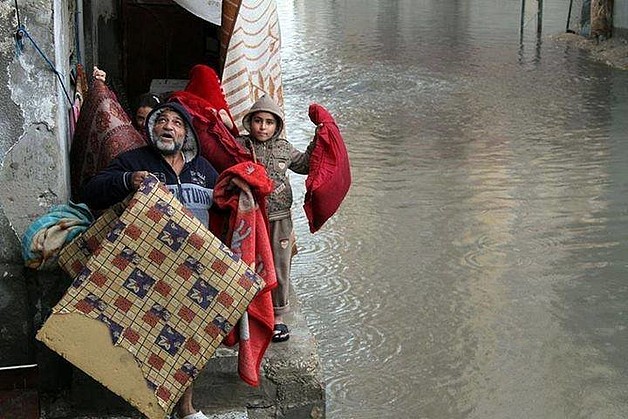Preparedness for potential floods in Gaza undermined by import restrictions
Thousands of families at risk

As the rainy season approaches, thousands of families in the Gaza Strip will once again be at risk of temporary displacement and the destruction of assets due to flooding. The winter weather conditions are expected to exacerbate the already fragile living conditions and livelihoods of large segments of the Palestinian population. The Water, Sanitation and Hygiene (WASH) cluster and its partners have identified flood risk areas throughout the Gaza Strip, potentially affecting nearly 500,000 people, as well as 64 schools and 10 health centres.
Over the past decade, the Coastal Municipalities Water Utility (CMWU) and other WASH partners have sought to implement infrastructural projects to address high-risk areas. These include interventions to separate storm and wastewater networks; extend storm water drainage networks and infiltration ponds; provide spare parts, maintenance and fuel for pumping equipment in low-lying areas; clear existing drainage channels; and provide support for service providers in prevention and response activities. These activities have been undermined due to limited funding and restrictions on the import of materials, particularly those designated by the Israeli authorities as “dual” militarycivilian use, as well as the internal Palestinian divide.
Currently, the CMWU is seeking to implement two projects aimed at reducing the risk of flooding in low-lying areas in Khan Yunis and Rafah, which serve approximately 220,000 residents. These projects have been delayed due to Israeli import restrictions, with some materials awaiting clearance for 10 months. The restrictions also apply to mobile and high-pressure jetting pumps, and to other equipment requested by the CMWU for flood prevention and response activities to pump storm and wastewater from low-lying areas to treatment plants, infiltration ponds or to the sea.
Although several WASH partners, including local and international NGOs, UN agencies and the International Committee of the Red Cross (ICRC), hold resources and plans for flood prevention and response activities in support of service providers, these remain limited in the face of the overall risks. Proposals have been submitted to the Humanitarian Fund for the OPT to cover the highest priority prevention and response needs as identified by service providers and WASH cluster partners.
Five additional projects are planned for 2017 to improve storm water infrastructure, ensure support to service providers, and to reinforce the preparedness and response planning of municipalities in high-risk flood areas. While these projects will provide the capacity for an immediate response, larger and longer-term projects from development actors are needed to advance the storm water master plans developed by the CMWU and WASH partners.
* This is article was contributed by UNICEF on behalf of the WASH Cluster.










